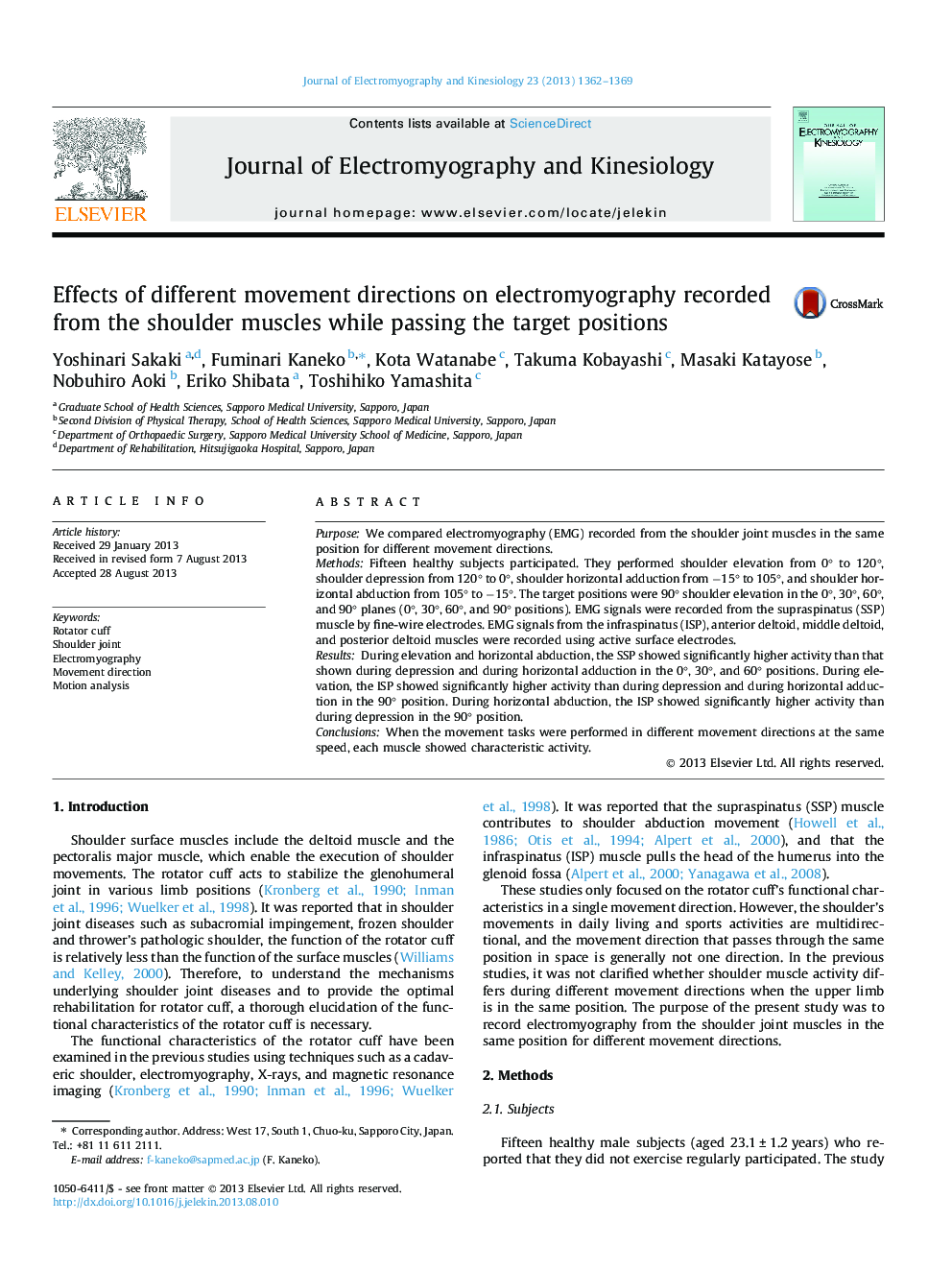| Article ID | Journal | Published Year | Pages | File Type |
|---|---|---|---|---|
| 4064813 | Journal of Electromyography and Kinesiology | 2013 | 8 Pages |
PurposeWe compared electromyography (EMG) recorded from the shoulder joint muscles in the same position for different movement directions.MethodsFifteen healthy subjects participated. They performed shoulder elevation from 0° to 120°, shoulder depression from 120° to 0°, shoulder horizontal adduction from −15° to 105°, and shoulder horizontal abduction from 105° to −15°. The target positions were 90° shoulder elevation in the 0°, 30°, 60°, and 90° planes (0°, 30°, 60°, and 90° positions). EMG signals were recorded from the supraspinatus (SSP) muscle by fine-wire electrodes. EMG signals from the infraspinatus (ISP), anterior deltoid, middle deltoid, and posterior deltoid muscles were recorded using active surface electrodes.ResultsDuring elevation and horizontal abduction, the SSP showed significantly higher activity than that shown during depression and during horizontal adduction in the 0°, 30°, and 60° positions. During elevation, the ISP showed significantly higher activity than during depression and during horizontal adduction in the 90° position. During horizontal abduction, the ISP showed significantly higher activity than during depression in the 90° position.ConclusionsWhen the movement tasks were performed in different movement directions at the same speed, each muscle showed characteristic activity.
